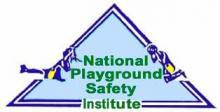
With the new guidelines for public playground equipment being published during the 1980s, the need for a playground safety training program became apparent to Fran Wallach, Ken Kutska, and Monty Christiansen. As members of the National Recreation and Park Association (NRPA), these three industry leaders met with the NRPA Executive Director in 1989 concerning a training program under NRPA to establish the playground safety standards of the ASTM International (ASTM) and the U.S. Consumer Product Safety Commission (CPSC) as “best practice” for safety compliance in designing and operating public playgrounds.
From these discussions came the first National Playground Safety Institute (NPSI), which was held in Baltimore, Maryland, in 1991 in conjunction with the NRPA Conference. Two years later, on May 22, 1993, the NRPA and NPSI Memorandum of Understanding were signed making NPSI a standing committee of the NRPA. As such, the NRPA executive director appointed the NPSI executive board, and NPSI followed their own by-laws in harmony with the NRPA's by-laws.
NPSI started with the purpose of being a national clearinghouse and information center concerning public playground issues. This mission has broadened to “teach our public how to provide a safe, challenging play environment for all children.”1 Besides promoting the importance of play for children and their right to a safe play environment, NPSI also promoted the latest public playground industry standards and guidelines.
In accordance with this last portion of their mission, NPSI developed a Certified Playground Safety Inspector (CPSI) training program for any person interested in playground safety, which could include a multitude of different government agencies, playground owners/operators, equipment manufacturers, playground contractors, consultants, and safety inspectors.
This two full day course teaches how to use the ASTM 1487 and CPSC guidelines; how to identify and prioritize playground concerns, such as entrapments and protrusions; how to address age appropriate and site planning concerns; how to analyze design and layout issues; and how to establish a playground safety program. Such a safety program would encompass playground maintenance plans, risk management concerns, regular inspections and compliance audits, while teaching safety awareness and maintaining documentation.
Participants in this NRPA CPSI course also study the various safety surfacing materials compliance issues, such as impact attenuation, head injury criteria, critical heights, fall heights, and use zones and minimal compliance factors of the Americans with Disabilities Act/Architectural Barriers Act Accessibility Guidelines (ADA/ABA AG).
The third day of the NRPA CPSI course is a two hour comprehensive testing of the students' mastery of these safety concepts. This is accomplished through a 100 question examination. Successful completion means they are a Certified Playground Safety Inspector for three years. Each CPSI must sit for the examination again if they desire to maintain their certification. Since 1991, the NRPA and NPSI have trained over 40,000 playground safety inspectors worldwide with an international CPSI registry of more than 7,000 CPSIs in good standing. This massive surge of safety training has brought the CPSC, ASTM, and ADA guidelines and requirements out of the academia arena and into the daily public realities such that schools, parks, municipalities, childcare facilities, homeowner’s associations, and fast food restaurants are now learning to apply these standards.
After three years, the CPSI Certification can be renewed by passing the current CPSI examination, which is available on the third day of class at each institute or by the computer-based examination through NRPA at over 1,500 test site locations operated by NRPA’s Certification Examination Contractor. NPSI maintains a current list of CPSIs on their website for the industry.2 A CPSI certification does not guarantee professional expertise in applying these safety standards, only that a playground safety inspector has a basic working knowledge of the current safety standards for playgrounds.
In 2001, NPSI adopted the CPSI's Professional Code of Practice to establish a written code of excellence for all CPSIs, and by 2004 they were discussing disciplines for code violations. Currently, a review process of code violations by the NRPA CPSI Course Certification Committee of the NPSI can mean a loss of certification.
Originally, the CPSI course materials included Play it Safe – An Anthology of Playground Safety, Points About Playgrounds, CPSC Handbook for Public Playground Safety, ASTM F1487, Playground Safety is No Accident, and a course syllabus. In 2005 NPSI completed a comprehensive course manual called “Certification Course for Playground Safety Inspectors Manual.” While it is possible to self study the course, NPSI strongly encourages all applicants to take the two day course which is team taught by two certified industry experts.
In 2010, at the NRPA Annual Convention, the NRPA Board of Trustees dissolved the governance structures of all their special interest Branches, Sections, and Committees. This act effectively dissolved the Executive Committee of the NPSI as it existed since 1993. In lieu of the NPSI Board that functioned in an advisory capacity to the NRPA staff, the NRPA has formed four committees to maintain the CPSI course and exam as it exists today. These Committees are the Certified Playground Safety Inspector Certification Committee (CPSICC), the Certified Playground Safety Inspector Certification Exam Committee (CPSICEC), the CPSI Curriculum Committee, and the CPSI Instructor Committee. These committees function independently of one another under the coordination of the NRPA staff.3
- 1. Kutska, Kenneth S. “NPSI: The NRPA's Role and Relationship to NPSI and NPSI's Role in Relationship to CPSI,” Today's Playground. November 2003:23.
- 2. CPSI Registry.” NRPA. < https://ipv.nrpa.org/CPSI_registry/default.aspx > 13 July 2010.
- 3. Kutska, Kenneth S. Email to Playground Professionals. 27 Feb. 2011.

